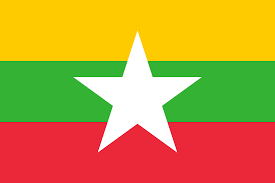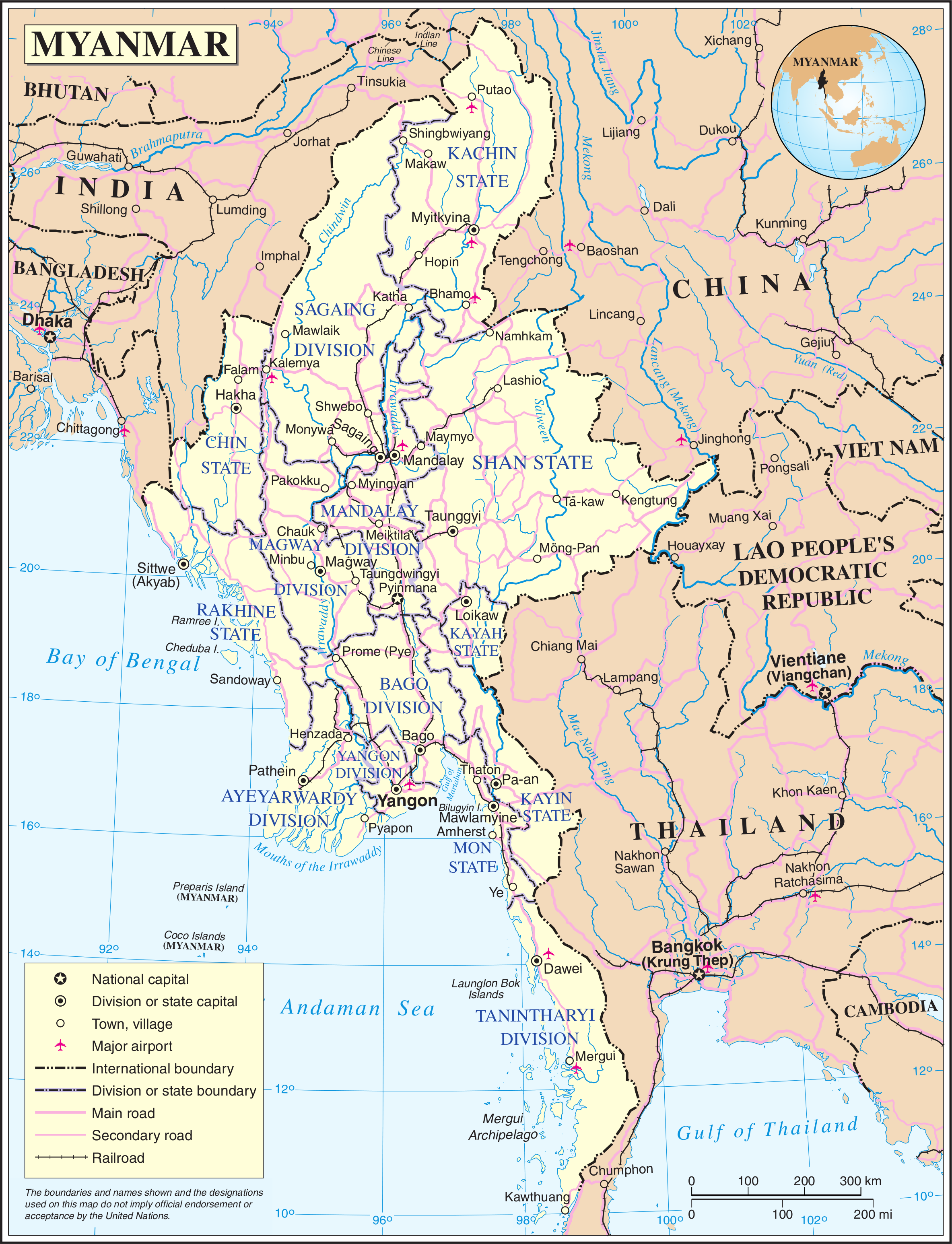
Myanmar
National implementation of the ASEAN Agreement on Disaster Management and Emergency Response (AADMER)
Overview of the DRM System
Myanmar has a Type D DRM System – Covers the full spectrum of disaster risk management: some elements of DRR, prevention, preparedness, early warning, mitigation, emergency management /response, and early recovery. Establishes specialist national institutions for DRM coordination and at least some local structures or roles. This is the most common type of DRM law found amongst countries with medium to high exposure to hazards that have adopted DRM laws since the mid 1990s. It is not necessarily based on a single law, but may be a mix of laws, regulations and assigned ministerial roles under executive government powers.
Legal framework
The disaster risk management system in Myanmar is established under the Disaster Management Law 2013 (DM Law) and the Disaster Management Rules 2015 (DM Rules).
Key national institutions
The DM Law and rules create the National Disaster Management Committee (NDMC) as the high-level policy body.
The Relief and Resettlement Department (RRD) in the Ministry of Social Welfare, Relief and Resettlement provides secretariat services to the NDMC and implementation of the DM Law and Rules.
The Natural Disaster Management Centre (within the RRD), has central responsibility for disaster information and disseminating early warnings from data obtained from the relevant agencies.
The Ministry of Home Affairs and Ministry of Foreign Affairs also have key roles in their areas of responsibility. The Armed Forces (Army, Navy, and Air Force) remain primary responders in disasters and are members of the NDMC.
Sub-national structures
The DM Law and DM Rules require the establishment of sub-national bodies:
1. Region or State Disaster Management Bodies
2. Self-Administered Division or Self-Administered Zone Disaster Management Bodies
3. District Disaster Management Bodies
4. Township Disaster Management Bodies
5. Ward or Village tract Disaster Management Bodies.
Funding and budget
The NDMC role includes spending and managing the Disaster Management Fund and the region and State bodies have similar roles and powers.
The NDMC is required to establish the Disaster Management Fund from allocation from the national budget, contributions and donations from foreign countries, international organizations and “external regional organizations”, loans, other donations etc., Region or state bodies have the same budget roles subject to the national committee supervision. More detail on the DM Fund is provided in the DM Rules (DM Law Art. 19 and DM Rules Ch.XI).
Integration of the AADMER and AHA Centre
Although the DM Law does not mention AADMER or the AHA Centre, the law’s objectives include regional coordination (DM Law Art.3).
The role of the NDMC includes national and regional cooperation and coordination with international humanitarian actors (DM Law Art.5).
The RRD is the AHA Centre National Focal Point.
Provision on international and regional assistance
2013 DM Law:
1. “Art. 2 definitions: Foreign Regional Organizations mean the Association of South East Asia Nations and the Associations formed among Asia and other Regions in which the State is a member;”
2. Art 5. The duties and powers of the National Committee are as follows:
– (aa) recommending to the Union Government of the necessary contribution to the Natural Disaster Management Fund by the foreign regional organizations;
– (bb) providing appropriate humanitarian assistance with the approval of the Union Government when it is known that the disaster strikes in foreign countries especially any member State of the foreign regional organizations and causes high level of damage and loss;”
– “(cc) permitting with the approval of the Union Government in respect of transit through the state of food and relief items and rehabilitation material provided by a foreign country to another country; “
– DM Rules Ch.X, on Communication and Collaboration with the Assisting International Actors – is also an NDMC role (not specific to regional).
Exemptions from tax for international assistance are available upon application:
1. DM Law Art.32. “Food, relief items and rehabilitation materials imported into the State for protection of natural disaster shall be exempted from paying tax under the relevant existing law.”
2. DM Rules Ch. X Art.69 set out details on application for tax exemption, “Ministry of Finance may exempt the tax and duty for importing of the standard food, commodities, household items, relief and emergency aid, and rehabilitation equipment…”
Transit of international assistance:
1. DM Law Art.5 NNDMC role includes “(cc) permitting with the approval of the Union Government in respect of transit through the state of food and relief items and rehabilitation material provided by a foreign country to another country; “
2. DM Rules regulate transit in more detail Art. 50 in Ch. X Communication and Collaboration with the Assisting International Actors.

Laws, policies, plans and other resources
Laws, policies and plans
2009 Myanmar action plan on disaster risk reduction (MAPDRR) 2009-2015
2012 Myanmar Action Plan for Disaster Risk Reduction
2013 Natural Disaster Management Law
2015 Disaster Management Rules
2017 National framework for community disaster resilience
2017 Draft Myanmar Action Plan on Disaster Risk Reduction, 2017 (not yet available in English)
National reports
2010 National Report on Implementation of the Hyogo Framework for Action
Not available in English
Reports and other sources
2013 MDRI-CESD TAF State and Regional Governments in Myanmar
2013 Oxfam et al Review of Myanmar’s Disaster Law from the Angle of Inclusivity
2014 UNICEF Disaster Management in Myanmar (powerpoint pres)
2014 ADPC Myanmar Country Report
2015 UNDP Myanmar Local Governance Mapping
2016 IFRC Myanmar IDRL Snapshot
2017 CFE Disaster Management Reference Handbook Myanmar
Myanmar Ministry of Social Welfare, Relief and Resettlement Department
Myanmar Law Database (MLDB) – subscriber service
Burma Library – secondary sources in English
![]()

